Europe is a backpacker’s dream—packed with history, stunning landscapes, and unforgettable experiences. Whether you’re exploring major cities like London or Berlin, or venturing off-grid, there’s something for every long-term traveller or weekend explorer. If you're craving adventure beyond the usual tourist trails, here are 16 epic activities to add to your backpacking trip.
Glide along the River Cam’s serene waters in a traditional punt, passing iconic colleges and beautiful sceneries. It’s the perfect way to unwind after visiting Buckingham Palace or hopping between European cities via high-speed train.
Whether you try your hand at steering (watch out for those low bridges!) or relax while a guide does the work, it’s the perfect way to see Cambridge’s iconic colleges from a unique perspective. Ensure to pack a picnic and enjoy the scenery as you go punting down the River Cam.
For thrill-seekers, standing on the edge of Norway’s famous "Troll’s Tongue" is a must. This 12-mile round-trip hike rewards you with jaw-dropping views over Lake Ringedalsvatnet. Pro backpacking tip: Start early and pack snacks. Western Europe’s trails are stunning but demanding!

Portugal’s west coast is a surfer’s paradise. Peniche’s consistent waves cater to all levels, and nearby cheap hostels make it ideal for backpacking budgets. Whether you're a beginner or a pro, the consistent swells and surf camps make it an ideal place to ride the Atlantic.
Explore Amsterdam by renting a bike. Pedal along picturesque canals, through vibrant neighborhoods, and past hidden gems most tourists miss. Just remember—bikes rule the road here, so keep up with the flow!

Leap into crystal-clear pools, rappel down waterfalls, and slide through natural rock slides in Switzerland’s breathtaking gorges. Interlaken is the hub for canyoning adventures that’ll get your adrenaline pumping.
Skip the expensive cruises and hop on a budget-friendly sailing trip around the Cyclades or Ionian islands. Swim in secluded coves, explore whitewashed villages, and party under the stars—pure island magic.

Slovenia’s Postojna Cave system is like stepping into another world. Ride an underground train through massive stalactites and stalagmites and keep an eye out for the mysterious olm (a rare aquatic salamander).
You don’t need to break the bank to hit the slopes. Resorts like Chamonix offer affordable hostels and ski passes for backpackers. Après-ski parties? Just as legendary as the runs. For cheaper lift tickets, look for midweek deals or multi-day passes, and pack layers.

Rent a car (or join a group tour) and drive along Ireland’s rugged west coast. From the Cliffs of Moher to remote Gaelic villages, this route is all about dramatic landscapes and warm pub welcomes.

Swap hostels for a night in a cozy treehouse deep in Sweden’s woods. Listen to the sounds of nature, maybe spot some wildlife, and unwind in total serenity. For the best experience, visit during the summer months when the midnight sun adds a magical glow to the forest. Just don’t forget bug spray!
Hike UNESCO-listed trails or tackle Via Ferrata climbs. The Dolomites deliver beautiful sceneries at every turn. It is known for its jagged limestone peaks, alpine meadows, and turquoise lakes await. The Via Ferrata routes (protected climbing paths) offer thrilling climbs with breathtaking views, which is perfect for adventurous backpackers.

Paddle through the serene, glacier-carved fjords of Norway, like Geirangerfjord, where waterfalls cascade down towering cliffs. Camp on remote shores and soak in the untouched beauty of Scandinavia.
Swap snow for sand and try sandboarding down the massive dunes of Maspalomas in Gran Canaria. It’s like snowboarding but with sunshine, warm breezes, and a desert-like landscape right next to the ocean. For the best ride, wax your board lightly to help it glide smoothly, and aim for early morning or late afternoon to avoid the scorching midday sand!
Take a refreshing dip in the crystal-clear Fairy Pools on the Isle of Skye. These magical blue pools beneath the Cuillin Mountains are fed by waterfalls—ideal for a brave cold-water plunge or a scenic hike.
Soar like a bird above the stunning Austrian Alps with a tandem paragliding flight in Innsbruck or Zell am See. Feel the rush of wind as you glide over snow-capped peaks, emerald valleys, and mirror-like lakes. It is an unforgettable way to see the mountains from a whole new perspective.
Explore the Arctic wilderness of Finnish Lapland, where you can pitch a tent or erect a tent and witness the mesmerizing Aurora Borealis dance across the sky. By day, try husky sledding, ice fishing, or snowshoeing through pristine winter landscapes.

From punting in Cambridge to paragliding in Austria, Europe’s adventures are endless. With cheap flights, flight deals, and budget flights, your Backpacking Europe journey starts now. Pack light, book the coolest hostels, and dive in. Where will you go first?
Machu Picchu is often at the top of many travel lists, and for good reason. This iconic UNESCO World Heritage Site combines breathtaking landscapes, fascinating history, and a sense of wonder that draws visitors worldwide. While the site’s allure is undeniable, experiencing it in luxury adds a layer of comfort and sophistication that enhances the trip. Here’s how to plan your visit to Machu Picchu as a luxury traveler, from transportation to accommodations and everything in between.

Reaching Machu Picchu involves multiple steps, but for those seeking a premium experience, there are excellent options available. One standout choice is Inca Rail’s Premium Train, which offers panoramic views, comfortable seating, and gourmet refreshments, allowing you to relax while taking in the Sacred Valley’s stunning scenery. This train option and other premium travel services not only provides a comfortable ride but also offers a sense of exclusivity and relaxation before you arrive at your destination.
Why choose a luxury train? Traveling in this manner allows you to fully immerse yourself in the journey, appreciating the changing landscapes without distractions. The comfort and services onboard turn what could be a logistical challenge into a highlight of your trip.
Timing your visit to Machu Picchu can significantly impact your overall experience. The dry season, from May to September, is ideal for clear skies and optimal hiking conditions. However, this is also the busiest time of year. To avoid larger crowds while still enjoying pleasant weather, consider visiting in late April or early October.
Luxury travelers often benefit from planning their visit during less crowded periods. Reduced foot traffic allows you to savor the site’s beauty and take unobstructed photos, making the experience feel more exclusive.
Several high-end hotels near Machu Picchu provide unparalleled comfort and service. Many of these properties focus on blending with the natural surroundings while offering modern amenities. Consider booking accommodations that include spa services, gourmet dining, and curated excursions.
Proximity to the site can enhance your trip—some hotels are located just minutes from the entrance, allowing you to access the ruins early in the morning before most visitors arrive. Early access provides a quieter experience and lets you capture the golden light of sunrise over the Andes.
A well-crafted itinerary makes all the difference, especially for luxury travelers. Begin your exploration with a private guided tour of Machu Picchu. A knowledgeable guide can provide insights into the site’s history and significance while tailoring the tour to your interests.
For a deeper connection with the region, consider adding excursions to nearby attractions. The Sacred Valley offers several archaeological sites and charming villages worth exploring. Many luxury tour operators can customize these experiences to match your preferences, combining cultural immersion with relaxation.
Machu Picchu is divided into two main areas: the agricultural terraces and the urban sector. The terraces showcase the Inca’s ingenious farming techniques, while the urban sector includes temples, residential areas, and ceremonial spaces. Don’t miss iconic spots like the Sun Gate, Intihuatana Stone, and the Temple of the Sun.
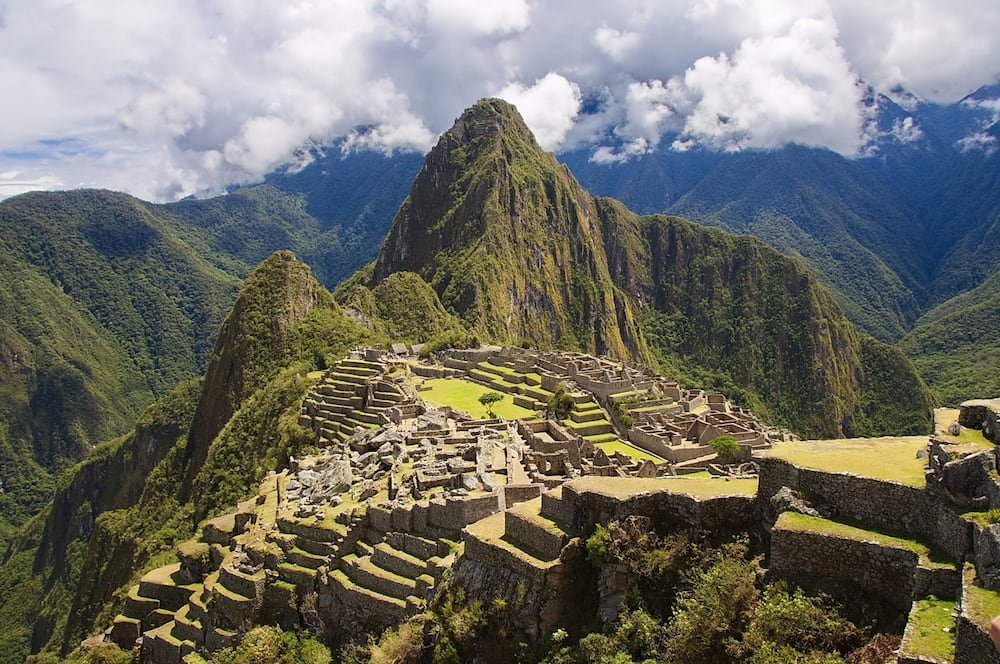
For a more exclusive perspective, consider hiking Huayna Picchu or Machu Picchu Mountain. These additional treks offer sweeping views of the site and the surrounding landscape. Keep in mind that permits are limited, so booking in advance is essential.
Food is an integral part of luxury travel, and the region around Machu Picchu offers exceptional dining options. Many high-end restaurants serve traditional Peruvian cuisine with a contemporary twist, featuring local ingredients like quinoa, trout, and Andean potatoes.
Some luxury train services and hotels also include gourmet meals as part of their offerings. These curated dining experiences often highlight the region’s culinary heritage while providing the high standards expected by discerning travelers.
Sustainability and luxury can go hand in hand. As you plan your visit, look for operators and accommodations that prioritize eco-friendly practices. Many luxury providers in the region contribute to local communities through employment opportunities and cultural preservation initiatives.
For example, some high-end hotels partner with local artisans to showcase traditional crafts or source ingredients from nearby farms. By choosing these options, you’re not only enjoying a luxurious experience but also supporting the region’s cultural and environmental sustainability.
Even luxury travelers need to be prepared for Machu Picchu’s unique environment. The site’s high altitude can cause discomfort if you’re unprepared. Spend a day or two acclimating in Cusco or the Sacred Valley before heading to the site. Maintaining your wellness during this time is essential, as altitude sickness can affect even seasoned travelers. Many luxury hotels provide oxygen services, herbal teas, and personalized support to help you adjust comfortably.
Dress in layers to stay comfortable, as temperatures can vary throughout the day. Don’t forget essentials like sunscreen, a hat, and comfortable walking shoes. A well-packed day bag can make your visit more enjoyable without compromising your comfort. Paying attention to these details ensures that you remain energized and fully able to appreciate the experience.
To fully appreciate Machu Picchu, take your time to absorb its details and atmosphere. Avoid rushing through the site; instead, pause to reflect on its history and significance. Hiring a professional photographer or bringing quality camera equipment can help you capture lasting memories of your trip.
Luxury travel is as much about creating meaningful experiences as it is about comfort. By approaching your visit with intention, you’ll leave with memories that go beyond the surface.
Machu Picchu offers more than its historical significance as a marvel of the Inca civilization. Visiting this site amidst the Andes mountains becomes a deeply rewarding experience with thoughtful planning. From premium transportation to curated excursions, there are numerous ways to elevate your visit. Following these tips allows you to explore Machu Picchu in a way that’s both sophisticated and enriching.
As a seasoned traveler, I've learned that a little insider knowledge can go a long way. That's why I'm sharing some key insights about Truist Park, a gem that often tops the list of must-see spots for backpackers in Atlanta. If you're planning a visit, you'll want to know what to expect and how to make the most of your experience.

Truist Park, a popular destination for backpackers, presents a unique experience in Atlanta. I aim to provide details about its rich history, formation, and how to get there to ensure your visit meets expectations.
Formally opened in April 2017, Truist Park, previously known as SunTrust Park, stands as the home ground for Major League Baseball’s Atlanta Braves. In agreement with Truist Financial, it was renamed Truist Park in 2020. Over the years, it's become a synonym for triumph, witnessing the Braves win prestigious titles. Apart from providing a stadium for games, the Park also embeds 'The Battery Atlanta,' an enthralling entertainment district with ample restaurants, music venues, and retail shops, adding to the park's vibrancy.
Truist Park resides in the bustling Cobb County, Atlanta, Georgia. It's easily accessible via various modes of transport, from both inside and outside the state. For locals, MARTA offers several routes that lead to the Park. Out-of-town visitors, including backpackers, will find Atlanta’s Hartsfield-Jackson International Airport, roughly 20 miles away, very convenient. To ease the commute, I suggest the CobbLinc Bus from the airport, as it provides direct connectivity to the Park. Even driving to the Park is effortless, thanks to Interstates 285 and 75. Moreover, there are plenty of hotels near Truist Park catering to different budget options, ensuring your stay is comfortable and offers easy park accessibility.
As a backpacker, immerse in the vibrant atmosphere of Truist Park, the sanctum for the Atlanta Braves and savor an array of amenities for an unmatched experience.
Marking the hub of baseball in Atlanta, Truist Park hosts the city's beloved Atlanta Braves. In most games, spectators get a thrill out of the electrifying competitions that take place here. The seating arrangement gives everyone a clear view of the field, making it a perfect spot for taking captivating photos of day or night games. You'll find it bustling with fans clad in navy, red, and white, cheering for their favorite team. Here, baseball isn’t merely a game; it's a cherished tradition that brings together a community.
Beyond baseball, Truist Park offers unique features that enrich the visitor's experience. Starting with 'The Battery Atlanta,' a mixed-use development housing an exhaustive variety of eateries, shops, and concert venues, it presents opportunities for enjoyment even beyond the baseball games. I'd also recommend exploring the Coca-Cola Roxy Theatre - a state-of-the-art facility hosting concerts and events. For the history enthusiasts, the Braves Museum provides a heroic journey through the Braves' history. Another feature is the Xfinity Rooftop, offering a panoramic view of the stadium and an interactive gaming area.
Apart from adrenaline-pumping sports, Truist Park is also a food paradise for budget travelers. I'm delighted to share some tantalizing food and drink alternatives within the park. Chains like Fox Bros. Bar-B-Q and pizza outlet Antico’s dish up crowd-pleasing meals, while craft beer fans can enjoy a variety of brews at Terrapin Taproom. Best part? You're allowed to bring your own food and drinks, keeping costs as backpacker-friendly as possible.
Within Truist Park's confines, a few tips can enhance a backpacker's experience. Be it saving money or packing for a game day, you'll find beneficial advice in this section.
Saving money during your visit to Truist Park comes down to being strategic. First, consider potentially cheaper seating areas, such as the General Admission sections. Second, take advantage of the "outside food" policy. It permits guests to bring food inside, as long as it fits into a clear, gallon-size container.
Next, don't overlook public transportation. Atlanta's public transit system, MARTA, provides cost-efficient travel and prevents hefty parking fees. Lastly, consider staying in budget-friendly hotels. It's a fuss-free way to cut costs without compromising your experience.
Smart packing contributes to a smoother experience on game day at Truist Park. Make sure you carry essential documents like your ID, game tickets or electronic confirmation, along with some cash and cards for purchases.
A poncho or small umbrella can be handy for unpredictable weather, given that umbrellas are allowed in the park as long as they do not obstruct other guests' views. Considering the stadium's outdoor nature, don't forget sunscreen and a hat or sunglasses to protect you from harsh sunlight.
Lastly, remember to pack any food you plan to bring within the park's permitted dimensions. Equipped with these essentials, you're set for a memorable game day at Truist Park.
Keeping yourself safe and relishing your time at Truist Park becomes effortless when you're informed about their security measures and prepared for varying weather conditions.
A visit to Truist Park must include an understanding of its security protocols. All entrants, including backpackers, undergo thorough screening through walk-through metal detectors, ensuring a safe environment for everyone. Bag policy allows backpacks or bags that fit under a stadium seat. It's vital to remember that the Park prohibits certain items like weapons, hard coolers, or glass bottles. To ensure a seamless entry, stick to the essentials and keep unnecessary items in nearby hotels.
Avoid carrying any prohibited items; always go through the list of allowed and prohibited items available on Truist Park's official website before your visit. Also, taking note of the emergency exits and safety announcements during the game provides an extra layer of safety.
One cannot predict the weather, but backpackers can surely prepare for it. Given Atlanta's weather can fluctuate, it's advisable to carry a rain poncho and wear layered clothing. That way, in case of sun, rain, or chill, you're adequately equipped to enjoy the game.
Keeping yourself updated with the day-to-day weather conditions of Atlanta during your visit can save you from unforeseen weather changes. Consider using weather tracking apps or websites. Remember, in case of severe weather, Truist Park has protocols in place to ensure everyone's safety. Stick to their guidelines, and your visit can remain a pleasurable experience, regardless the weather says.
As a backpacker, your focus should be on immersing yourself in the excitement of the game and the vibrant atmosphere of Truist Park. Stay informed, stay prepared, and most importantly, enjoy your adventure.
More and more people are heading towards the comfort and convenience of private planes, which offer fewer interruptions and more privacy in their travel plans. International airports are getting busier every day, and so are people. We’ll let you in on a secret: These trending airports do not seem so busy if you are not there to catch a commercial flight. We bring you a list of airports that will make it to the top choices of people traveling the world this year. With an adjustment to your mode of travel, you can enjoy the attractions of each port without losing your flight or getting stuck in security lines. But beware — you might end up loving it too much to ever fly commercial again.

The Singapore airport also hosts a yearly workshop called ‘Enchanted Night at Changi Experience Studio’s Holiday Camp.’ It provides you and your kids the experience of a lifetime with arts and crafts and welcomes you for a magical sleepover. If interested, you can taste the fun at this June workshop.
Home to Oryx Airport Hotel, the airport is also thoughtful about its passengers. You can enjoy some spa time, a game of squash, or dive into an 82-foot swimming pool. There is so much to do at the airport that it can almost make anyone way too excited for the adventures of Qatar itself.
Narita Airport hosts many art exhibitions for people traveling to Japan. One of the best things about art is that you can tell a lot about people just by looking at what they create. You can also taste authentic delicacies at the airport, keeping the excitement of exploring a new space alive.
The airport serves the capital of Colombia, Bogotá. One of the most pleasing features of this International Airport is its lactation booths. These are available to all lactating mothers and offer a comfortable, safe, and hygienic space to feed their babies.
The Parisian DNA also comes across in the food, concerts, intimate music settings, and the airport's duty-free store. Charles de Gaulle Airport is a commotion of French culture, especially now that the Olympics are nearing.
Events like the G20 in India (2023) or the Paris Olympics (2024) tend to attract huge crowds. Services can often slow down, causing emotional anguish to a passenger tired from a long series of flights. So why not stand out and opt for a private jet hire? Let’s see how they can elevate your experience.

On a commercial flight, you will likely sit with a stranger, but when you fly a private jet charter, you get to pick your fellow passengers in the aircraft. The latter promises you complete privacy.
Many people find it easier or ideal to work when flying. Flying in a private jet offers you amenities like onboard Wi-Fi, with enough speed to carry out essential functions like sending emails and having meetings. Commercial flights' lack of privacy and space might constrict you from executing work practices.
Space is another factor, interdependent on privacy and productivity. Usually, commercial flights have dedicated time slots for using the lavatory, and passengers are only allowed to move within the cabin's space. However, with a private plane rental, passengers can choose the aircraft size and have free reign to move around.
Both commercial and private flights provide first-class amenities to their passengers. However, the latter is more luxurious. While light beverages and pre-prepared meals are included with your tickets on a commercial flight, on a private jet charter, you can order your favorite meal with beverages of your choice. Furthermore, if it's a long-distance flight, you can stretch out on the couch — yes, private jets can be a lounge in the sky if you’re looking for such an experience.

This guide covers some of the incredible benefits of flying privately. However, let us know if you think we should have mentioned your favorite part of traveling in a private plane rental. It might make it onto our next list of the luxurious perks of private aviation.
Imagine exploring ancient cities, with towering temples framed by lush, dense jungles in Guatemala. The remnants of the Mayan civilization offer a treasure trove of rich archaeological sites. These are ideal for those eager for both adventure and history. Whether you're a seasoned backpacker or a first-time explorer of non-typical tourist routes, preparing for this journey can be exciting.

But check this out – Guatemala is a hotspot for eco-tourism, with many options for travelers seeking adventure amidst the beauty of nature. Consider incorporating spelunking tours into your itinerary to explore hidden caves and underground rivers, or embark on a thrilling hike up volcanic mountains for breathtaking vistas. Here are essential travel tips and insights to guide you through your adventure.
The core areas of ancient Maya, known for their historical and cultural significance, span across Guatemala's northern regions and highlands. Key sites include Tikal, the colossal city in the northern rainforests, and the lesser-known Yaxha and Nakum. Heading south, Quirigua displays intricate sandstone carvings worth a visit. For those interested in contemporary Mayan culture, the Ixil Triangle offers a view into ongoing traditions and daily practices.
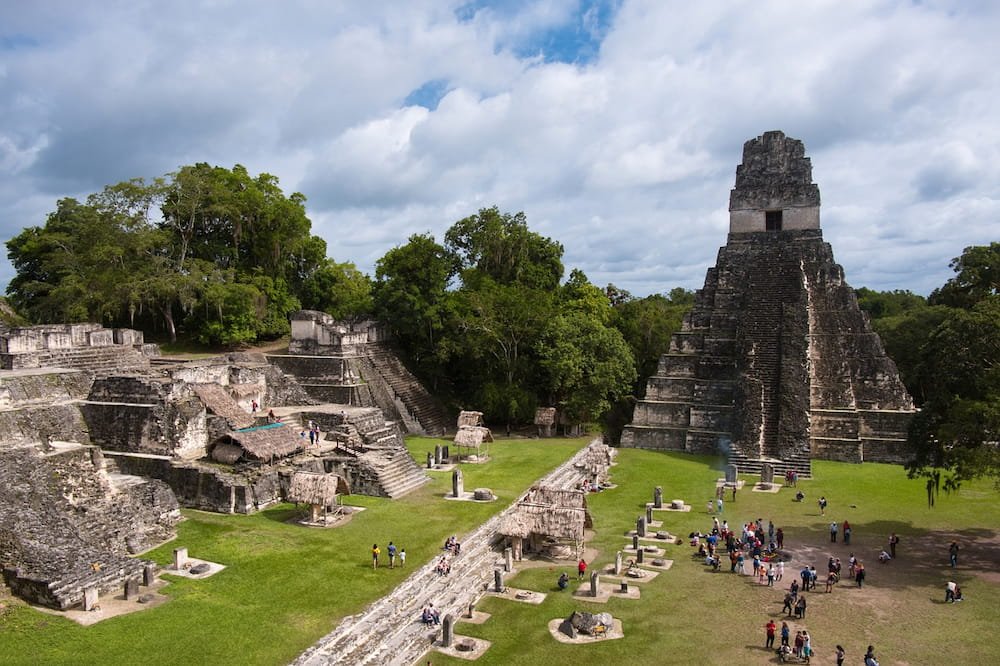
To fully grasp the magnificence of the Maya civilization, consider dedicating ample time to each site. Tikal, for instance, deserves at least a full day to appreciate its vast expanse and towering temples. Climbing to the top of Temple IV, the tallest pre-Columbian structure in the Americas, rewards you with a breathtaking panoramic view of the surrounding jungle canopy. The ethereal experience of watching the sunrise or sunset from this vantage point is an unforgettable highlight for many travelers.
Choosing the right time for your visit enhances the experience. The dry season, between November and April, presents the best conditions for exploring jungles and ruins comfortably. This period minimizes the chance of rain interrupting your explorations. Additionally, consider aligning your visit with local Mayan events such as the Wayeb' or the Rabin Ajaw festival in Cobán to see vibrant, cultural celebrations.
While the dry season is ideal for outdoor exploration, there are benefits to visiting during the shoulder months of May and October. During these times, you can expect fewer crowds at popular sites, allowing for a more intimate experience with the ancient ruins. The occasional rain during these months can also enhance the lush beauty of the jungle landscape, making for some truly spectacular photo opportunities. Just be sure to pack a lightweight rain jacket or poncho to stay dry during any passing showers.
Venturing into Guatemala's rural areas, where many ruins are, calls for careful planning. Public transportation is infrequent in remote zones. It is beneficial to organize your travels through local providers who include transport, guides and meals. Prioritize your safety by staying informed of the latest travel advisories. Essential items to pack include insect repellent, a first-aid kit, sun protection, and plenty of water. Respect local customs and environmental rules to preserve these historic sites.
Learning a few key phrases in Spanish and the local Mayan language can go a long way in facilitating meaningful interactions with the local communities. Simple greetings, expressions of gratitude, and basic questions can help bridge cultural gaps and demonstrate your respect for the people and their heritage. Many locals appreciate the effort to connect, even if your language skills are rudimentary. Carrying a pocket phrasebook or downloading a language app can be helpful tools in navigating these interactions.
To fully experience the Mayan regions of Guatemala, immerse yourself in its living culture. Participate in local activities like traditional cooking classes or weaving workshops—these not only deepen your appreciation but also support the local economy. Festivals offer a profound way to enjoy authentic expressions of the community through dance, music, and cuisine.

Armed with these guidelines, your journey through the ancient Mayan landscapes promises to be both thrilling and enriching. This adventure will surely provide more than just photos; it offers memories that will last a lifetime.
Everyone can live out their own fairy tale at Disneyland. Everyone can find something they like to do in this park and feel like they're back in their youth. But how can you enjoy your trip without being too busy? This full guide will show you how to get around Disneyland with kids, point out the must-see spots, and give you family-friendly tips to make the trip more fun for everyone.

Disneyland has become the undisputed leader as a park with the best attractions and shows. "Many other parks, such as a theme park in China that was supposed to compete with Disneyland, have failed and closed their gates to visitors." - writes TravelWise.
It's important to plan your trip to Disneyland with your kids well so that you have the most fun and the least amount of stress. You should become familiar with the park's layout by studying the maps available on the website or in the Disneyland app. This will help you figure out where the must-see sites and places to eat are, so you can get around quickly. It is important to correctly adjust the time for the trip. To reduce the time you have to wait at the attractions, it is better to choose weekdays. Also, don't forget to use the Disneyland app to save a lot of time. It keeps track of ride wait times and shows real-time park updates. It also has an easy-to-use food ordering tool that makes shopping for food more convenient. TravelWise says that if you plan ahead, your family's trip to Disney will be magical and easy to handle, so you can focus on making experiences with your kids that they will never forget.
The two main parks in Disneyland Resort are Disneyland Park and Disney California Adventure. You can save your time by getting to know these parks better by looking at maps of them online. Figure out which sights and entertainment areas are the most important for you to see first.
Time is very important. Wait times can be cut down by a lot if you go during the week or an off-season. To get to the most popular rides before everyone else, get there early in the morning when the gates open.
For young children, Fantasyland is the heart of Disneyland. This is where fairy tales come to life. It's a must to see "Peter Pan's Flight" and "Dumbo the Flying Elephant." The impressive animatronics on the newly remodeled "Alice in Wonderland" ride give it a fun new twist.
To keep your kids interested, you need to visit Mickey's Toontown. Any child would love to visit Mickey, Minnie, and their friends at home.
Tomorrowland is both exciting and charming in a future way. When kids use "Buzz Lightyear Astro Blasters" to shoot lasers at Zurg, they can feel like they're in space. You shouldn't miss the "Finding Nemo Submarine Voyage" either. Anyone can enjoy it, whether they are a kid or an adult.

At Disneyland, the live shows are a great way to relax and see some amazing shows. The story of Elsa and Anna is told in a way that you will never forget in "Frozen – Live at the Hyperion" at California Adventure. It is on par with Broadway shows.
You can't spend a day at Disneyland without seeing at least one show. Kids of all ages will love the "Main Street Electrical Parade" because of its bright lights and sounds. "Fantasmic!" is also a show that happens at night and mixes fireworks, characters, and real actors to make a spectacular fantasy.

Disneyland can be too much for both kids and adults. There needs to be regular breaks. To relax, look for places with less noise, like the "Redwood Creek Challenge Trail" in California Adventure. It's important to stay hydrated and use sunscreen often, especially on hot days.
The Child Swap or Rider Switch services can help you enjoy some of the bigger rides even though you have little ones with you. While the other parent waits with the child, one parent can ride. When it's time to switch, neither parent has to wait in line again.
You might want to book a character dining experience instead of waiting in line to meet a figure. This way, your kids can meet figures in a less tense setting while they eat.
It doesn't have to be scary to go to Disneyland with kids. Your family can have a magical and unforgettable day at this famous amusement park if you plan ahead, pick the right rides, and follow some secret tips. Do not forget that Disneyland is more than just rides and shows. It's also about the beautiful times you spend with your family. So enjoy the magic, go on the journey, and make memories that will last a lifetime!
Have you ever seen a tent suspended between trees? I remember seeing this concept a few years ago on social media and was super interested in trying it out. Well, we recently had the opportunity to test out the Tentsile Flite 2-person Tree Tent and have put together a little review based on our limited experience using it.
I will preface this review by saying this is purely a product review based on finding a suitable location, putting the tent up, improvising a sleeping situation, and pulling the tent down. We did not do a full camping test so our feedback is somewhat limited in this regard.
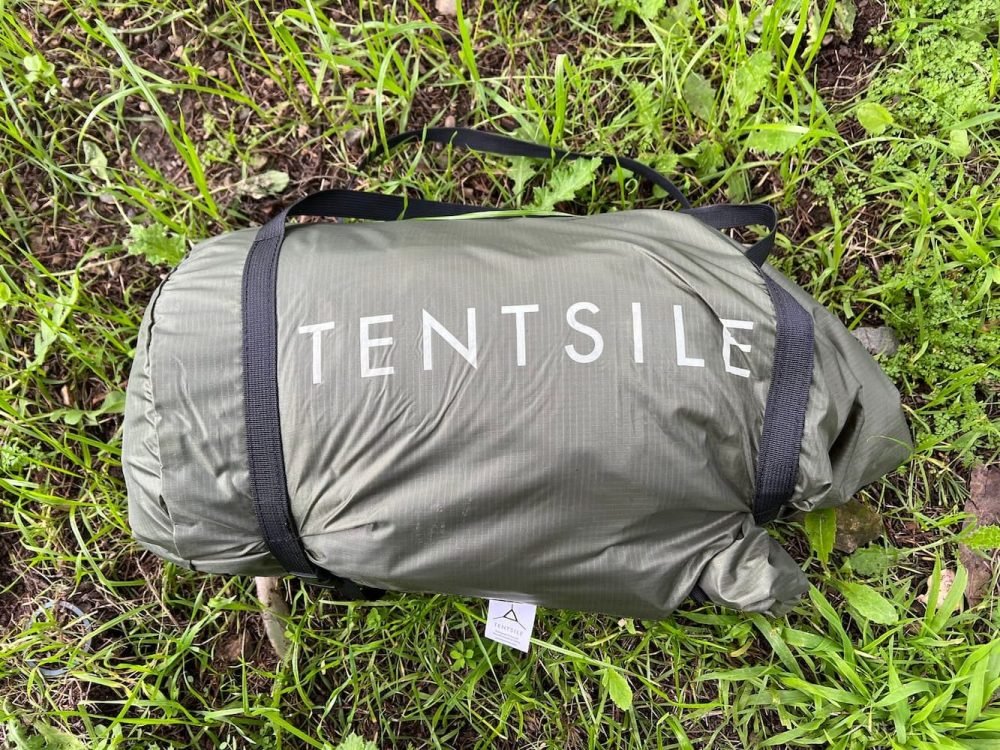
Living in San Francisco we are surrounded by parks and rugged coastline with ample tree cover. At first I thought this would make it pretty easy to do a test but as you will read below, it was a little more difficult than I had hoped. I have broken this review into sections to make it more digestible. Here goes...
The first impression was that the tent was quite heavy in comparison to other 2-person tents. This is due predominantly to the ratchet and D rings. For a 2-person tent, it felt significantly heavier and bulkier than normal. When I compared it to similarly priced 2-person ground tents it was at least double the weight, if not more, coming in at 4.7kg (10.4lb) .
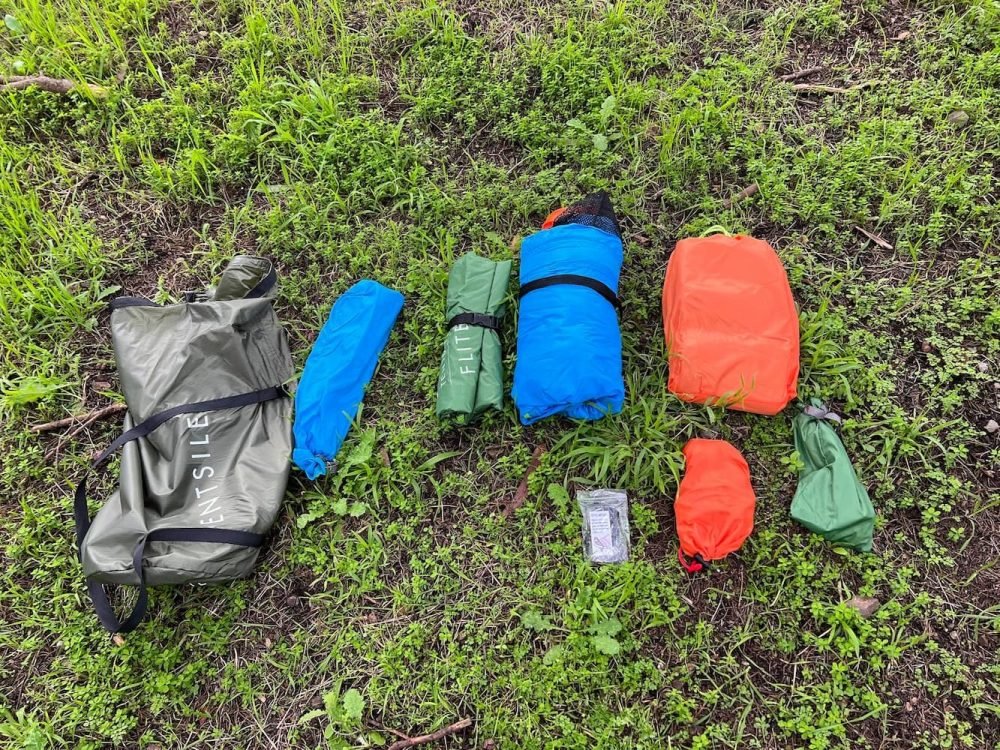
It took quite some time to find 3 trees that would work (due to the required distance apart, the arrangement of the trees, and the girth of each trunk). I realize there is a ground kit but this was not included so I couldn't review it and this also would be extra weight (1.5kg) and cost ($85).
This need for a rather specific tree arrangement will eliminate some sites completely if there are no suitable trees (or no trees at all). Of course, it's important to remember that a standard ground tent has its own issues if the ground is uneven, rocky, or too wet. As you'll read in my conclusion, there is actually a good crossover between the issues for a ground tent vs a tree tent.
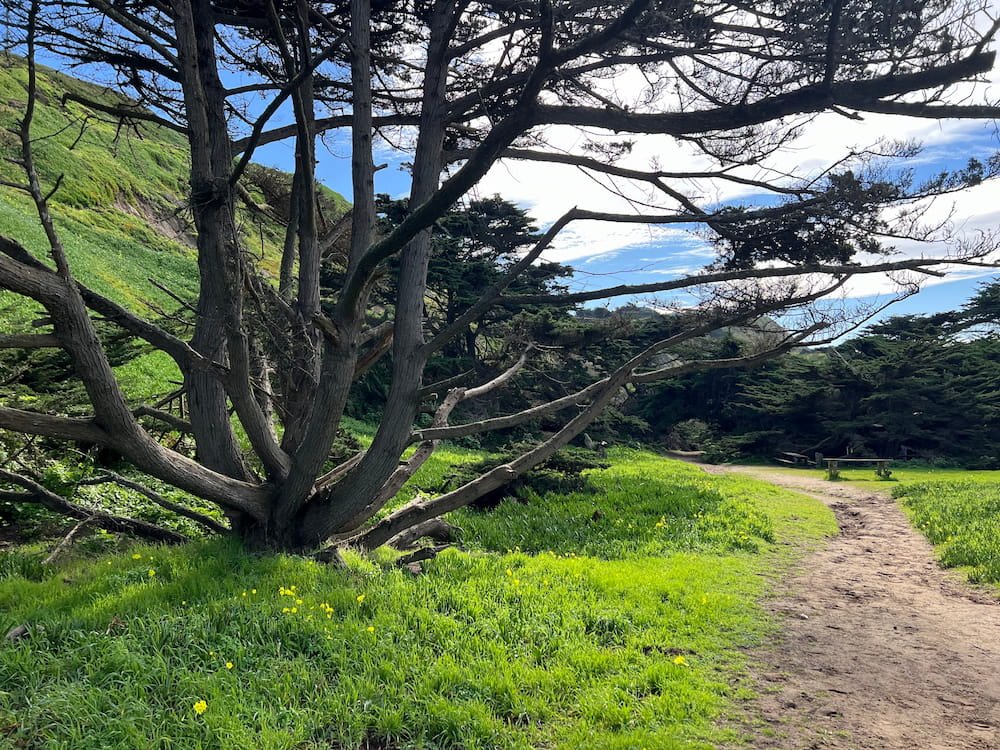
Once we found 3 suitable trees, it was far more time-consuming and complicated than I expected to put the tent up. If I was tired due to hiking, or it was the end of the day I would not want to take on this battle. Not to mention if it was raining (which it did while we were packing up).
That being said - I'm sure it would get easier and quicker with more practice but there are inherent issues that come with this design.
Aligning the tent between the 3 trees was challenging, especially trying to get each strap the same height on each tree.
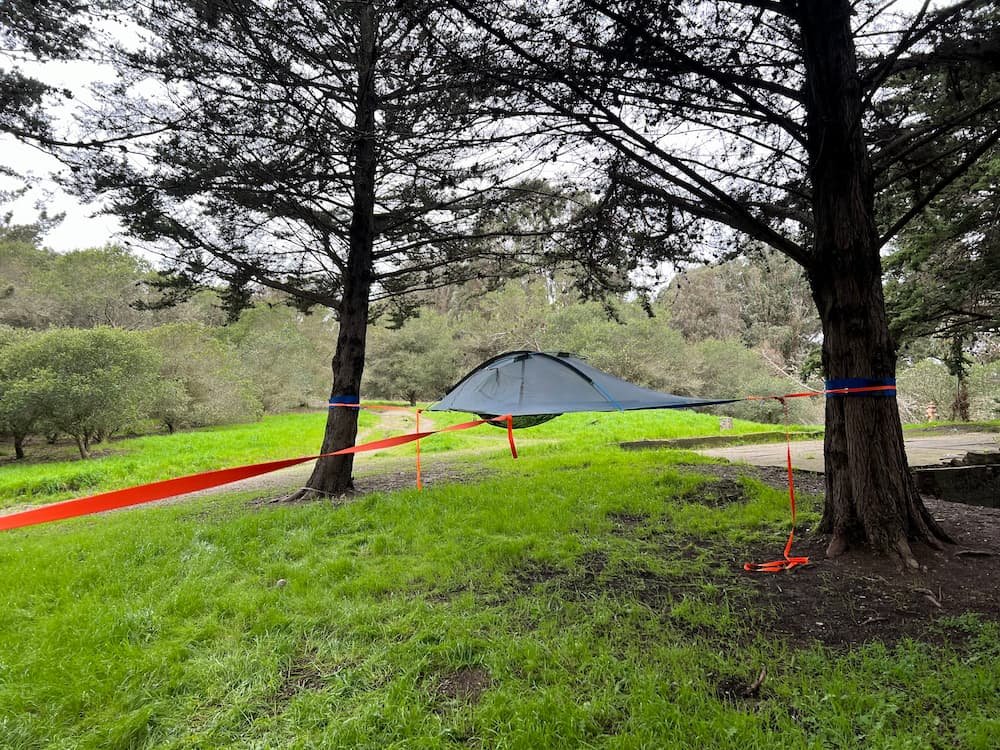
Tensioning the straps took some effort. If you have never used a ratchet system before this is going to be quite frustrating for your first few attempts. It took me around 6 or 7 attempts before I managed to get an even tension on all 3 straps so that there wasn't a significant sag in the floor of the tent.
Once the tent was erect and taut it was extremely comfortable to lie down on as a single person. As soon as we both jumped in we sorta sank together into the middle and there was not a lot of room.
With a pack and other items it would have felt even tighter and the extremely low roof felt a little claustrophobic.
Due to the hammock-style of the tent you would probably not need to pack sleeping pads if you're in a warm climate (saving around 800g based on 2 pads) which is a plus. However, if you were taking this to a cold climate you would most definitely need those sleeping pads for insulation as the floor provides no insulation at all.
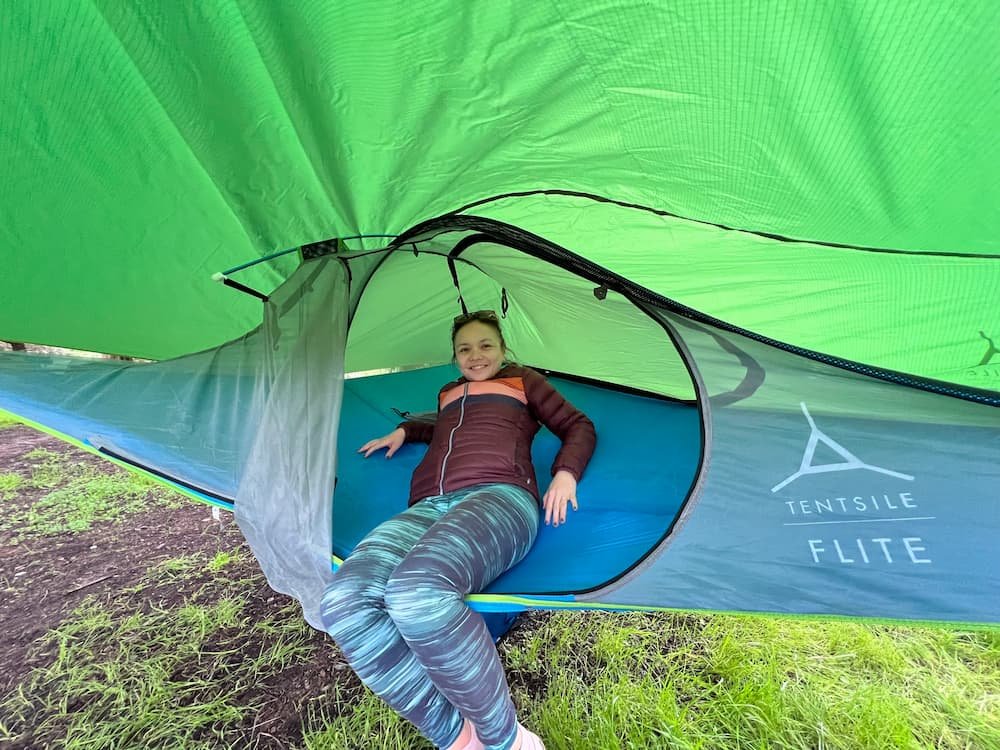
No matter how taut you end up getting the straps, this tent is much more affected by wind than a standard ground tent. It's significantly harder to erect in windy conditions and sways even in light winds.
Where it comes into its own is the benefit of being elevated during heavy rains/flooding which is a huge plus. If you've ever set up your tent near a creek or low-lying land and then had rain overnight you know how sucky getting flooded camping is.
Being elevated also means that air can flow beneath the floor of the tent. This could be a benefit in warm conditions but would not be good in colder temperatures, especially if you don't have a sleeping pad.
Given the limited interior space, there is a small mesh bag that can be hung below the tent. This is actually quite a novel idea as it gives a lot more space inside the tent while keeping the bags dry though there are a couple of issues.
Firstly, you would not want to keep any food in your pack as this could attract critters. Secondly, you also wouldn't want to keep anything valuable in your packs as it's much more accessible to theft.
As you can see from the picture below there is a massive benefit to this design which basically gives you a place to sit and chill out that's out of the sun and rain. This was a huge benefit when we finished putting the tent up and wanted to get out of the rain.
Due to the size of the tarp, it's also pretty easy to get into or out of the tent from underneath without stepping outside.
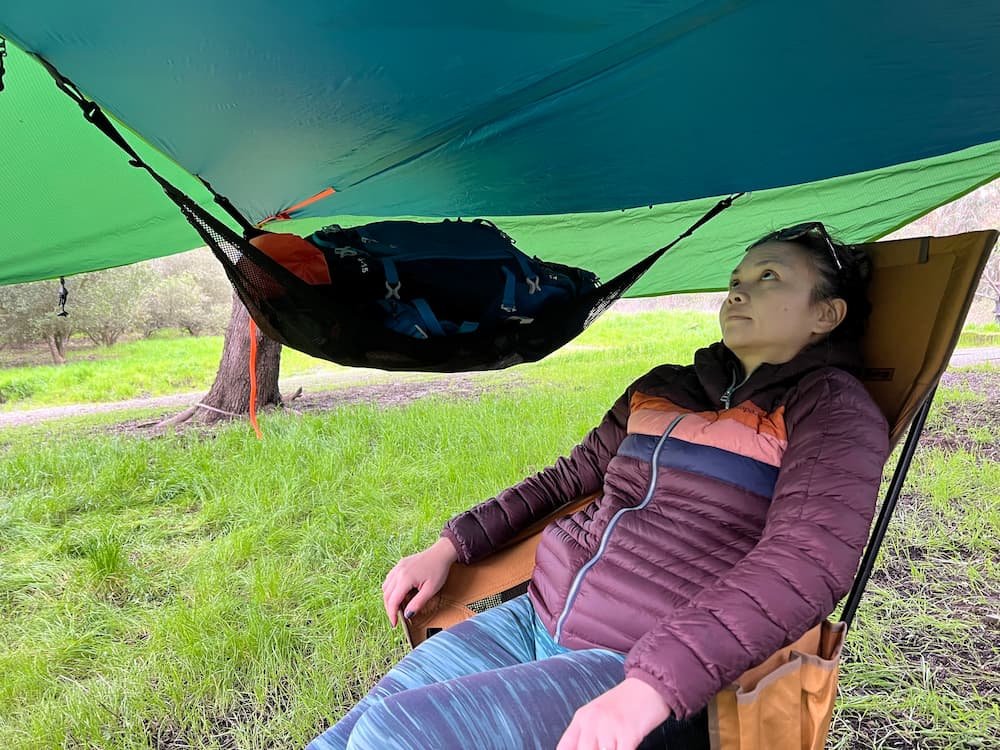
Packing up was very straightforward though also took a little longer due to the need for wrapping straps and tree wraps. This was definitely not a factor though. It was really as simple as releasing the ratchet, untying a knot, and disassembling.
I really wanted to love this tent. It looks cool and has some interesting applications. Unfortunately I don't think this would be my go-to tent for camping unless I knew that there were plenty of trees and it wasn't a long hike in.
However, I do think there is a market for this type of tree tent, especially the fun-factor for kids. This would make the perfect tent to take the kids on a camping trip. Imagine the fun they would have climbing in and out.
I also think this allows for some extreme camping that would simply not be possible with a standard ground tent. I've seen these pitched over rivers and even across canyons. It certainly makes for an epic social media post (which ironically is what first drew me to the design).
After providing our feedback from the review, Tentsile came back to us with the following tips:
"There are instructions available on Tentsile’s Youtube channel that explain how to adjust the underfloor strap so that you get two individual berths, and don’t roll into the middle."
"Although finding three trees in the right configuration can be difficult for a first-time setup, Tentsile has a guide on their Youtube channel that gives some tips and hacks for finding the right angles. They have also developed an App which can be used to help with this."
When you set foot on Jordan's ancient lands, you embark on a timeless journey where history and civilization merge at the heart of the Middle East. Rich with stories of empires, traders, and prophets, this country invites you into the depths of history. From Petra's mysterious city, aglow in rose-red hues, to Wadi Rum's serene desert expanses, Jordan unfolds as a historical and natural wonder tapestry, ready for your discovery.

Jordan's allure extends beyond its archaeological treasures, reaching into the warmth of its people and the diverse landscapes that define its terrain. Tracing ancient civilizations' steps, floating in the buoyant waters of the Dead Sea, or stargazing from a desert camp, your experiences here will etch a lasting impression on your soul. Prepare to be captivated by a vibrant blend of culture, history, and nature as you explore Jordan.
Exploring Petra's wonders is essential for any Jordan holiday. Carved into vibrant rose-colored cliffs, this archaeological site unveils the Nabateans' architectural genius. As you wander through the Siq, a narrow gorge flanked by towering cliffs, the Treasury, Petra's iconic symbol, suddenly appears, showcasing its enduring charm and mystery.
Delving deeper into Petra, you'll discover a vast array of tombs, temples, and ancient dwellings, each narrating the story of a once-thriving civilization in this desert oasis. The Monastery, with its stunning facade, rewards climbers with sweeping views of the surrounding mountains, prompting reflection on the immense scale of human ambition and resilience.
Including Petra in your Jordan journey highlights a must-visit destination, embodying the spirit of adventure and discovery that characterizes this historic land. It's a realm where you can immerse yourself in ancient echoes, marvel at Nabatean architectural feats, and feel the pulse of bygone eras beneath your feet.
Jerash, known as the Pompeii of the East, showcases one of the Middle East's best-preserved Roman urban architectures. Entering through the ancient gates, you'll be greeted by colonnaded avenues, grand temples, and vast public squares, remnants of a once-thriving metropolis.
The Oval Plaza, with its distinctive elliptical shape and encircling Ionic columns, introduces you to the city's splendor. The South Theatre, with a capacity of over 3,000 spectators, continues to host performances resonating with the cultural vibrancy of its Roman era.
As you explore Jerash, the fusion of Greco-Roman and local architectural styles becomes evident, highlighting the rich cultural melding that defined this ancient city. The ruins stand as a silent tribute to the passage of empires, providing a palpable link to the ancient Roman world in Jordan's heartland.
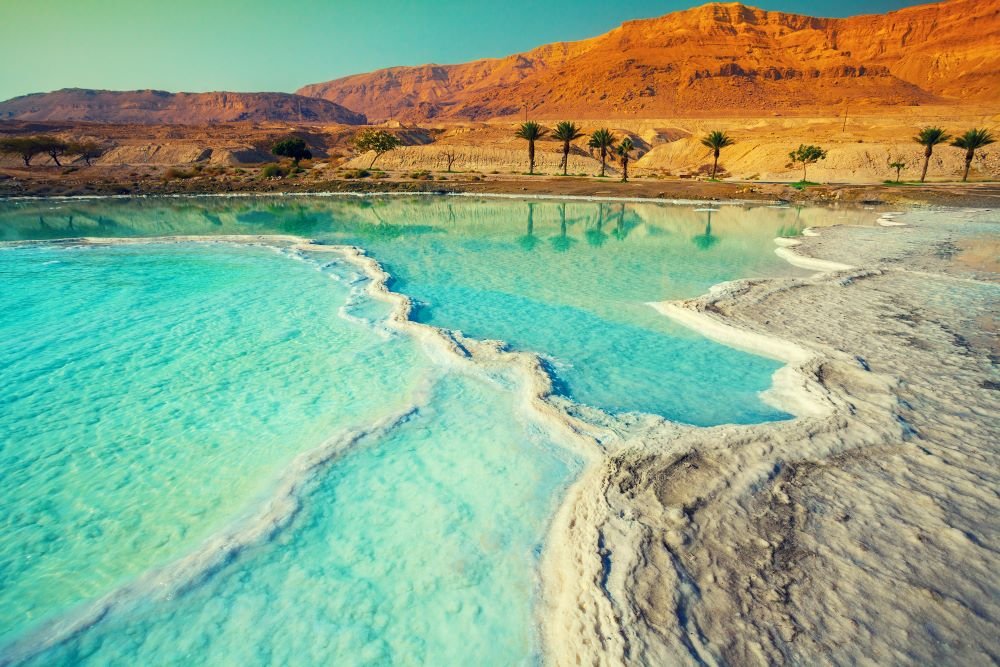
Floating in the Dead Sea offers an unparalleled experience. Situated at the Earth's lowest point, this saline lake is celebrated for its stunning beauty and healing properties. Its mineral-rich waters and mud are renowned for their health benefits, attracting visitors from around the globe. The Dead Sea is also considered one of the best religious or spiritual destinations, drawing those seeking tranquility and renewal.
The buoyancy of the Dead Sea makes floating effortless, offering a serene moment of relaxation against the dramatic backdrop of the surrounding desert and cliffs. This rejuvenating experience for the body also invites quiet reflection, further enhancing its reputation as a spiritual haven.
Surrounding the Dead Sea are various historical and natural sites, like the imposing Masada fortress and the lush Ein Gedi oasis, blending scenic beauty with historical intrigue to enrich the Dead Sea experience with exploratory adventures.
Amman, Jordan's capital, is a dynamic city where ancient history meets modern life. Landmarks like the Roman Theatre and the Citadel provide glimpses into the city's rich past amid its bustling urban atmosphere.
Perched on one of Amman's seven hills, the Citadel offers panoramic views of the sprawling city and houses significant artifacts like the Temple of Hercules and the Umayyad Palace. This site allows you to navigate through historical layers while overlooking the city's vast landscape.
The culinary scene in Amman is another highlight, reflecting traditional Jordanian hospitality. From street vendors serving falafel and hummus to upscale restaurants offering refined Middle Eastern cuisine, Amman invites you to savor Jordan's flavors in an environment that blends historical charm with contemporary style.
In contrast to Jordan's archaeological sites, Wadi Rum, or the Valley of the Moon, reveals vast, untouched desert landscapes. Renowned for its towering sandstone formations and expansive sandy valleys, this protected area offers a surreal setting reminiscent of otherworldly scenes.
Experiencing Wadi Rum's magic is best done through a 4x4 adventure or a camel trek, allowing for an intimate exploration of the desert's vast core. The shifting colors of sands and rocks, especially under the golden light of sunset, present a captivating display.
For a genuine immersion, consider spending the night in a Bedouin camp under the expansive starry sky. This opportunity connects you with Bedouin traditions and provides insight into the nomadic lifestyle that has intertwined with this desert for millennia.
Jordan is a land where history comes vividly to life, offering a journey through time that is as awe-inspiring as it is humbling. This journey isn't just about witnessing the remnants of ancient civilizations; it's about engaging with a heritage that continues to influence the present and inspire future generations. Jordan warmly invites you to discover its treasures and become part of its enduring story.
Studying abroad: the mere mention conjures images of bustling foreign cities, ancient universities, and the promise of adventures that blend learning with global exploration. It's an experience that goes beyond the confines of a traditional classroom, offering a unique blend of academic rigor and life-enriching travel. But what makes studying abroad so transformative, and how can you make the most of this opportunity? Let’s dive into the world of international education and discover how it combines the pursuit of knowledge with the thrill of discovery.

Have you ever wondered why millions of students pack their bags each year to study in a land far from home? The answer lies in the unparalleled mix of high-quality education and the immersion in a new culture. Studying abroad exposes you to diverse teaching methodologies, often in institutions renowned for their academic excellence and innovation. But it's not just about the grades; it's about growing in a setting that challenges and expands your worldview.
Imagine learning Italian in the heart of Rome or delving into international relations in Geneva. These aren’t just academic pursuits; they’re pathways to deep cultural immersion. You learn the local language, engage with the community, and understand global issues from a fresh perspective. It’s an education that textbooks alone cannot provide.
A personalized study plan is your map in this journey. It outlines what you need to learn, when you'll study, and how you'll assess your progress. This doesn't just include academic learning but also developing essential life skills like time management, critical thinking, and effective communication. How will you balance your studies with other responsibilities? How will you keep yourself motivated and on track? A well-thought-out study plan is flexible yet structured, allowing for personal growth while ensuring academic success.
In today's digital age, an array of resources and tools are at your fingertips. From online libraries and educational apps to study groups and tutoring services, these resources can enhance your learning experience. Have you explored which tools might best suit your learning style? Whether it's interactive tutorials, flashcards, or academic journals, integrating these tools into your study plan can make the journey both efficient and enjoyable. Also, don't forget that you can use additional online resources to study while traveling, which can greatly ease the stress of balancing studies and travel. A clear example of such a service is the Edubirdie portal, where you can find a large number of lectures or notes on various topics. You can find literally anything there, from the theory of deliberate play to scientific research in the field of psychology and health.
No journey is meant to be traveled alone. Building a support network of peers, mentors, and educators can provide encouragement, advice, and a sense of community. How will you connect with fellow students or find mentors in your field? Whether through online forums, campus organizations, or study groups, fostering these connections can make the journey less daunting and more rewarding.

Every journey comes with its set of challenges, but it's the perspective you choose that defines the experience. Viewing obstacles as opportunities for growth transforms the journey into an adventure. How will you adapt to setbacks? What strategies will you employ to overcome obstacles? Embracing challenges with resilience and a positive mindset can lead to unexpected discoveries and achievements.
Adopting a growth mindset is key to navigating the educational journey with confidence and curiosity. This means believing that your abilities and intelligence can be developed through dedication and hard work. Are you prepared to step out of your comfort zone, embrace new experiences, and learn from feedback? A growth mindset not only propels you forward academically but also enriches your personal development.
Preparing for the educational journey is not a one-time task but a continuous process of planning, adapting and growing. It's about setting your sights on the horizon, armed with a clear vision, a well-charted map, and a resilient spirit. By understanding the importance of preparation, crafting a personalized study plan, leveraging resources, and embracing challenges, you're not just embarking on an educational journey; you're setting the stage for a lifelong adventure of learning and discovery. Remember, the journey itself is just as important as the destination. So, take a deep breath, embrace the excitement, and prepare to chart your own course. The world of knowledge awaits, and the journey you're about to undertake is nothing short of extraordinary.
One of the most compelling reasons to study abroad is the opportunity to take courses not available at your home institution. Whether it’s specialized subjects or unique fieldwork opportunities, international study programs offer a breadth of education that can significantly enhance your academic portfolio.
But it’s not just your intellect that grows; your personal development takes a leap too. Navigating life in a foreign country fosters independence, adaptability, and resilience. From managing everyday tasks in a new language to handling unforeseen challenges, the experience molds you into a more capable and confident individual.
Studying abroad places you in a melting pot of cultures, connecting you with people from all corners of the globe. These aren’t just classmates; they’re future leaders, innovators, and lifelong friends. The networks you build can open doors to international careers, collaborations, and a deeper understanding of global issues.
The friendships forged in the unique environment of international study are often deeper and more enduring. Shared experiences, from exploring local landmarks to celebrating traditional festivals, create bonds that last a lifetime. These connections enrich your life, providing a global support system and a reason to travel and explore even more.
Studying abroad is not without its challenges. Homesickness, cultural adjustments, and navigating academic expectations in a new environment can test your resolve. But it’s in overcoming these hurdles that the experience becomes truly transformative. Each challenge conquered is a step toward becoming a more adaptable and resilient person.
There’s an undeniable thrill in finding your footing in a new country. The success of managing your studies, social life, and daily logistics in an unfamiliar environment is a significant personal achievement. This independence is empowering, instilling a confidence that permeates all aspects of your life.
Studying abroad is more than an academic endeavor; it’s a journey of personal discovery and global exploration. It challenges you, changes you, and ultimately enriches your life in ways you never imagined. By combining education with world exploration, you gain not just knowledge but a broadened perspective, lifelong friendships, and memories that last a lifetime. So, are you ready to embark on this transformative adventure?
Skiing is a popular getaway activity that takes playing with snow to a whole new level. According to a report on the ski and snowboarding industry by Forbes, 10.5 million skiers visited resorts in the United States from 2020-2021, and more than one million of those visitors were first-timers. Whether it’s in Aspen or Breckenridge, skiing is perfect for thrill seekers and adrenaline junkies.

Before planning your next skiing adventure, there are some things you should consider. In our previous article about snow forecasting, we mentioned how areas affected by warmer temperatures can have less snowfall, which could affect your skiing experience. Monitoring snow forecasts helps you plan how you can make the most of your time on the slopes — and whether it’s safe to do so. Skiing is an extreme sport that can also result in injuries, so paying close attention to the weather and wearing the right gear is important to protect you from harm. Here are some tips for picking the right snow gear for your next ski trip.
Your hands help you stabilize movement with your poles when skiing, and it can be pretty distracting and difficult to navigate the slopes if they're cold or lack grip. To ensure your hands are at their best during your ski trip, remember to bring gloves that provide adequate insulation to keep them warm. Waterproofing on your gloves is also crucial, as it helps your hands keep dry in the snow. Don’t forget to test if the gloves provide a good grip on your ski poles and allow your fingers to move easily as well. The North Face’s Etip Recycled Gloves are a great find if you’re looking for durable gloves that provide warmth and a good grip on a chilly trip to the mountains.

Wearing snow goggles is important when you’re high up in the mountains to ski, especially because your eyes are at risk of exposure to too much ultraviolet (UV) light from the sun, which could lead to vision problems such as photokeratitis or snow blindness. The ski goggles from Oakley carry the brand’s patented Plutonite lens material, which provides 100% UV protection and is included in their Flight Tracker and Target Line models. These goggles also have the Flexible O Matter chassis that allows for a comfortable fit to your face and meets the American National Standards Institute’s impact requirements. Using quality goggles during a ski trip is crucial for vision protection and helps you avoid any unfortunate trips to your eye doctor.
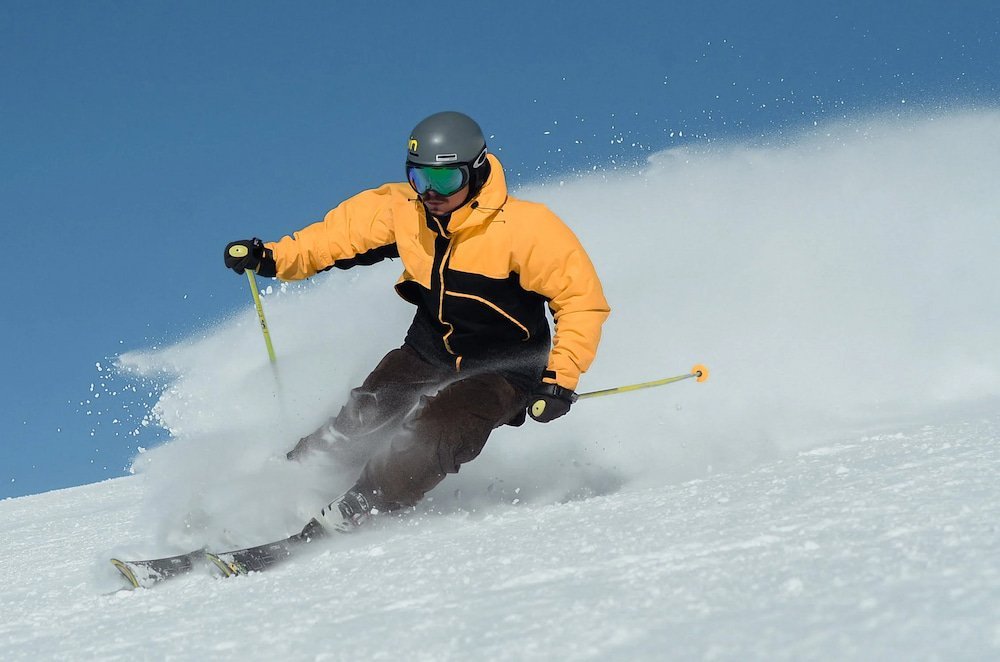
Wearing a helmet during a ski trip is necessary for preventing serious head injuries that may occur when you fall or hit obstacles. A study on snow sports injuries found that incidents of head or neck injuries were highest in freestyle skiing, which is why a good helmet is important to prevent fatal fall damage when you’re up in the mountains. Choose a helmet with a hard outer shell and a comfortable fit to help you have a smooth and safe skiing experience. REI Co-op’s Smith Method Mips Round Contour snow helmet is perfect for your trip, especially since it meets American standards for snow helmet certification and is lightweight with impact protection.
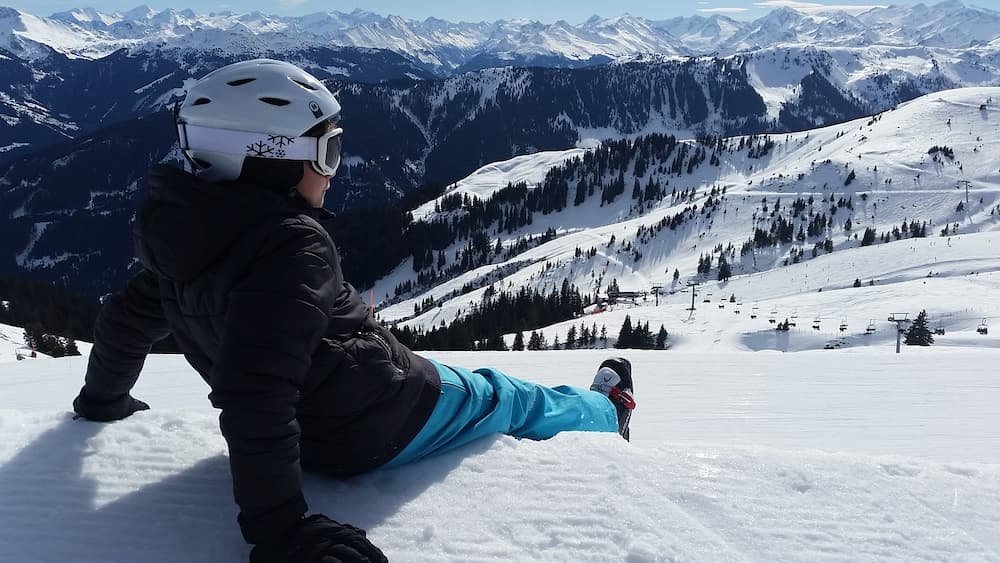
Ski boots connect your body to your skis, so you need a pair that enhances your balance, performance, and enjoyment to avoid any injuries. Make sure you have boots with a hard outer shell to avoid risks of ankle injuries and a soft inner layer to provide warmth and comfort for your feet. You can try the Radical Pro ski boots from Dynafit, which are light and comfortable and have a Hoji Lock system that allows you to use them comfortably when you’re climbing or descending.
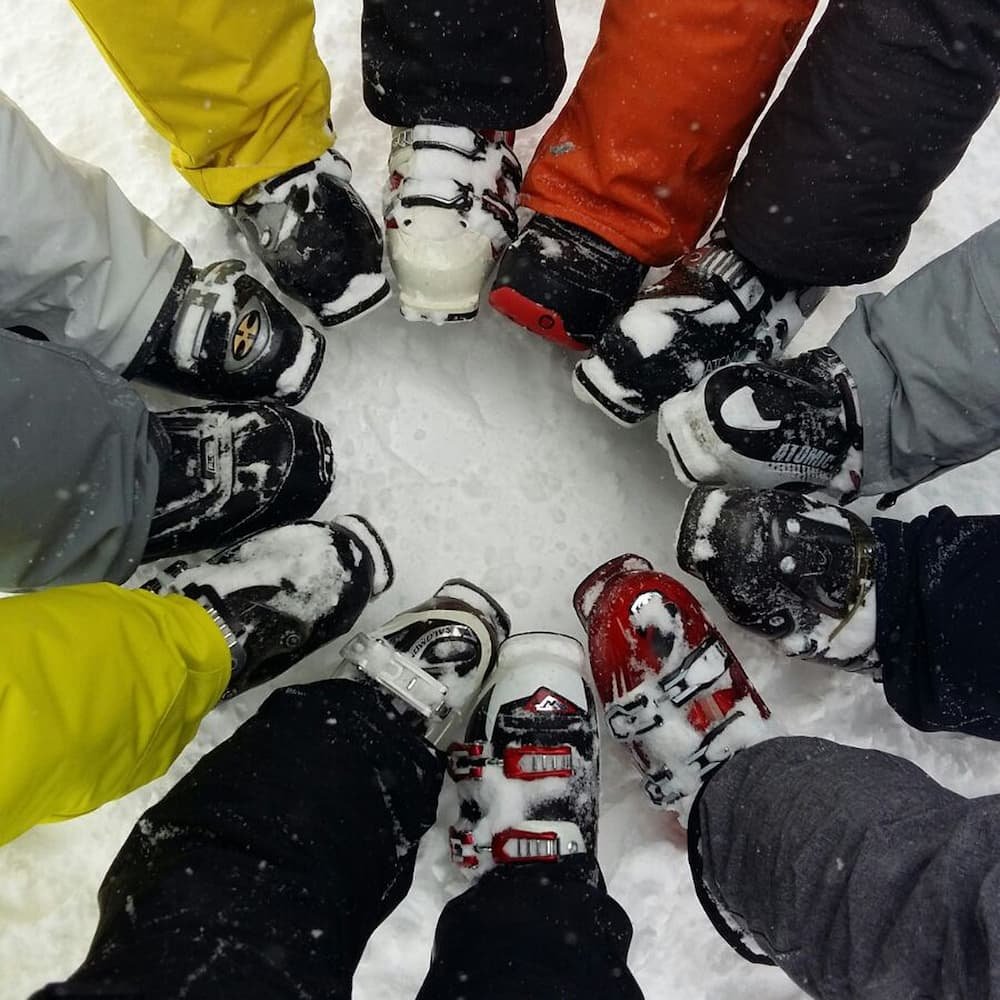
Using the right gear for your next ski trip prevents possible injuries and enhances your overall experience and performance. Be sure to follow these tips for a safe and comfortable skiing adventure.
